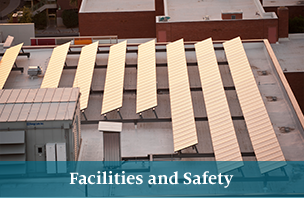Access Device/s: See definition of Key.
CatCard: The official University of Arizona identification card.
Department Access Coordinator (DAC): Person designated by the Vice Presidents, Deans, Directors, Department Heads and Building Managers to be responsible for authorizing and processing all access control transactions for the department.
Electronic Access Security: Any electronic or electro-mechanical locking device, using a Key that can be controlled from a site that is remote from the device. Any device that can be programmed, reprogrammed, that could have users added, modified or removed from a site that is remote from the device. Any device that can be opened, unlocked, locked or disabled from a remote location.
Key: Any means or Access Device used to lock, unlock, open or used to gain access into a secured area. This includes, but is not limited to, metal key, combination, keypad code, keypad PIN code, CatCard, Access Card, magnetic, proximity, biometric, RFID (radio frequency identification), or any combination of devices used to lock, unlock, open or gain access to a secured area.
Mechanical Security: Locking device requiring no electrical power to open, lock, unlock, or secure access to an area, which use a metal key or other apparatus.
Monitoring Center: Underwriters Laboratories [UL] listed monitoring center that provides 24 hour, 7 day per week off-site monitoring of security, fire and other alarms and dispatches security, police and/or fire personnel when an alarm is received. Monitoring Center can be a third-party security vendor.
Physical Security: Comprises Mechanical Security, Electronic Access Security and a Security System.
Security System: Devices to detect unauthorized intrusion or breach of a security parameter and that notify local or remote Monitoring Center.
Security Levels:
Level 1 – Basic Security: Areas that are typically unlocked during business hours allowing access by University personnel or the general public. After hours these areas are secured and access is by University CatCard and use of PIN. University support Units will have access to these areas. An additional key pad may also be integrated into the Security System, requiring it to be armed and disarmed by authorized personnel, as necessary, to maintain the desired level of security.
Level 2 – Enhanced Security: Areas that are mechanically and electronically locked at all times, including during normal business hours and requiring University CatCard to gain entry each time and may also require use of PIN. University support Units will have access to these areas. An additional key pad may also be integrated into the Security System, requiring it to be armed and disarmed by authorized personnel, as necessary, to maintain the desired level of security.
Level 3 - High Risk Security: Areas that by Federal, State, or local laws or code restrict access, or are restricted by University policy. These areas may require higher security access control devices such as biometric control devices. In some cases access by University support services may be restricted or limited and may require support services be escorted by approved Unit personnel. An additional key pad may also be integrated into the Security System, requiring it to be armed and disarmed by authorized personnel, as necessary, to maintain the desired level of security.
Third-Party Security Vendor: A security vendor that provides a 24/7 support staff, in conjunction with a Monitoring Center, to monitor all the designated Security Systems.
Unit: Any University college, department, program, or other operating unit.



